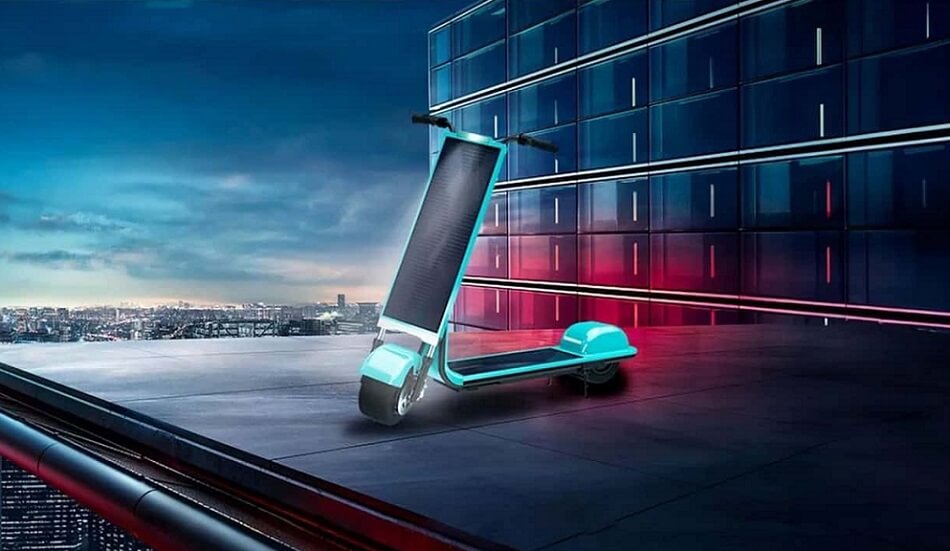Solar Electric Scooters
In the ever-evolving landscape of urban mobility, e-scooters have emerged as a breath of fresh air (quite literally) for commuters seeking sustainable, efficient, and affordable transportation options. However, as we zoom into the future, one intriguing question looms large: Can solar power revolutionize the e-scooter industry, or is it merely a fleeting innovation?
Picture this: You’re strolling down the bustling streets of a modern city, and amidst the whirlwind of activity, you spot a sleek e-scooter basking in the sun, its solar panels glistening. This is not science fiction; it’s a glimpse of the evolving e-scooter landscape. Solar-powered e-scooters are fast becoming the talk of the town, and for good reason.
One of the most significant challenges facing e-scooter operators today is the need for frequent charging. Traditional e-scooters rely on docking stations and charging hubs, which not only limits their operational radius but also requires substantial energy resources for upkeep. Enter solar power: a clean, renewable energy source that has the potential to change the game entirely.
The concept behind solar-powered e-scooters is simple yet revolutionary. These vehicles are equipped with solar panels that convert sunlight into electricity, which is then stored in onboard batteries. This not only extends the scooter’s range but also reduces its dependence on conventional grid-based charging. As a result, operators can deploy their fleets more efficiently and sustainably.

Pros of The Solar-Powered Scooters
But is this just a fleeting trend, or a genuine game-changer for the e-scooter industry? Let’s delve into some key factors that make solar power an exciting prospect:
- Sustainability: Solar-powered e-scooters are undeniably greener than their grid-charged counterparts. They reduce the carbon footprint associated with manufacturing, charging, and maintaining these vehicles.
- Cost Savings: While the initial investment in solar technology can be substantial, it pays off in the long run. Solar panels have a lifespan of several years, and once installed, they generate electricity at no ongoing cost. This translates into potentially significant savings for e-scooter operators.
- Extended Range: Solar panels can continually charge the scooter’s battery, thereby increasing its range and reducing downtime. This makes them more reliable for riders and more profitable for operators.
- Adaptability: Solar-powered e-scooters can be placed strategically in sunny areas or parks, capitalizing on natural sunlight to recharge. This flexibility can optimize fleet management and expand service areas.
However, the road to widespread adoption of solar-powered e-scooters is not without its bumps. Challenges such as intermittent sunlight in some regions, initial setup costs, and the need for efficient energy storage solutions still need to be addressed. Additionally, solar panels add weight and cost to the e-scooter, which can affect the overall user experience.

The History of Solar Scooters
The history of solar scooters is a testament to human ingenuity and the relentless pursuit of sustainable transportation solutions. While solar electric scooters may seem like a recent innovation, their roots can be traced back several decades to the early experiments with solar technology.
- 1970s – The Dawn of Solar Mobility: The 1970s marked the emergence of solar energy as a viable power source. During this era, solar cells were relatively expensive and inefficient, but their potential for clean energy was evident. Researchers and inventors began experimenting with solar-powered vehicles of various sizes, including scooters.
- The Sunraycer and Solar Challenges: The turning point for solar-powered mobility came in the 1980s with the introduction of the GM Sunraycer, a solar-powered car that won the inaugural World Solar Challenge in 1987. This event showcased the potential of solar energy in transportation and inspired further exploration of solar-powered vehicles.
- The 1990s – Early Solar Scooter Concepts: In the 1990s, as solar cell technology continued to improve, there were sporadic attempts to create solar scooters. These early prototypes were often cumbersome and impractical, with large and inefficient solar panels. However, they laid the groundwork for future developments.
- The 2000s – Technology Advancements: As solar cell efficiency increased and became more affordable, the concept of solar-powered scooters gained renewed attention. During this decade, various inventors and small companies began experimenting with integrating solar panels into scooter designs, albeit on a limited scale.
- The 2010s – Rise of E-Scooters and Solar Integration: The explosive growth of electric scooters (e-scooters) as a convenient urban transportation solution coincided with advancements in solar technology. This decade saw the emergence of e-scooter-sharing services in many cities worldwide. As these services sought ways to improve sustainability and reduce operational costs, the idea of solar-powered e-scooters gained traction.
- Present Day – Solar-Powered E-Scooter Startups: Today, several startups and established e-scooter companies are actively developing and deploying solar-powered e-scooters. These modern solar scooters are equipped with efficient solar panels integrated into the scooter’s design. They use sunlight to recharge onboard batteries, extending their range and reducing the need for traditional grid-based charging.

While solar scooters have come a long way from their humble beginnings, challenges remain, including optimizing solar panel efficiency, addressing energy storage limitations, and ensuring the durability of solar components in daily usage. However, the concept has evolved from an experimental idea to a promising solution for sustainable urban transportation.
As solar technology continues to advance, and as society places increasing importance on environmental sustainability, the history of solar scooters is likely to continue its forward trajectory. Solar-powered e-scooters could become an integral part of our future urban mobility landscape, offering a cleaner, greener, and more efficient way to get around our cities.

Conclusion
In conclusion, the idea of solar-powered e-scooters is not a fluke but rather a promising glimpse into the future of urban mobility. As technology continues to advance and the world becomes more environmentally conscious, the e-scooter industry may very well embrace solar power as a sustainable and economically viable solution. While it may not replace traditional charging methods entirely, it’s poised to play a significant role in reducing the environmental impact of urban transportation and reshaping the way we get around our cities. So, keep your eyes on the horizon, because scooters in the sun are here to stay.
Solar Electric Scooter Video Review
FAQ
Q: What is a solar electric scooter (solar scooter)?
A: A solar electric scooter, often referred to as a solar scooter, is an electric scooter equipped with solar panels that capture sunlight and convert it into electricity to recharge the scooter’s batteries. This technology extends the scooter’s range and reduces its reliance on traditional grid-based charging.
Q: How do solar scooters work?
A: Solar scooters work by harnessing sunlight through integrated solar panels. These panels convert sunlight into electrical energy, which is stored in the scooter’s batteries. This stored energy is then used to power the scooter’s motor, allowing it to move without depleting the battery completely.
Q: Are solar scooters completely self-sufficient in terms of energy?
A: While solar scooters can generate electricity from sunlight, they are not entirely self-sufficient. They still require traditional charging methods, especially in regions with limited sunlight or during nighttime. Solar panels on scooters primarily supplement the battery’s charge.
Q: Do solar scooters have to be parked in direct sunlight to charge?
A: Solar scooters benefit from direct sunlight, but they can also charge in diffused light or partial shade. However, charging efficiency is highest in direct sunlight. They can be parked strategically in sunny areas to optimize solar charging.
Q: What are the advantages of solar electric scooters?
A: The advantages of solar electric scooters include reduced carbon emissions, extended range, cost savings over time, and increased sustainability. They also provide flexibility in fleet management and can operate in areas with limited charging infrastructure.
Q: Are solar scooters more expensive than regular electric scooters?
A: Solar scooters typically have a higher upfront cost due to the integration of solar panels and related technology. However, over time, they can yield cost savings in terms of reduced charging expenses and increased operational efficiency.
Q: Can solar panels on scooters withstand wear and tear?
A: Solar panels on modern solar scooters are designed to be durable and resistant to normal wear and tear. They are typically protected by a transparent cover or layer to shield them from physical damage.
Q: Do solar scooters require special maintenance?
A: Solar scooters do not require significantly different maintenance compared to regular electric scooters. Routine maintenance may include cleaning the solar panels, checking connections, and ensuring the electrical system is in good condition.
Q: How long does it take for solar panels to charge a scooter fully?
A: The time it takes to fully charge a solar scooter depends on various factors, including the size and efficiency of the solar panels, the intensity of sunlight, and the state of the battery. It may take several hours to a full day of sunlight to achieve a full charge.
Q: Are solar scooters suitable for all climates?
A: Solar scooters can operate in a variety of climates, but their efficiency may vary. They work best in regions with ample sunlight. In areas with less sunlight or during cloudy days, they may rely more on grid-based charging.










